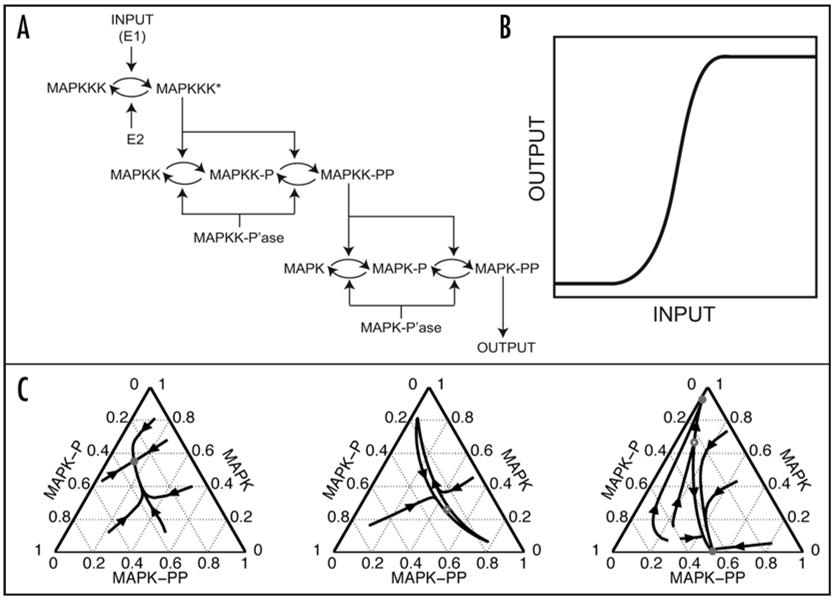Figure 1.
(A) The three-stage structure of the MAPK cascade.8 (B) A schematic of the ultrasensitive input-output (I/O) map: the output is switched between the “off” and “on” states within a very narrow ranges of inputs. Such an input-output map can be described using the Hill function: O = [In/(Kn + In)], where n > 1; I and O denote the input and output, respectively, and K is the value of the input that leads to the half-maximal value of the output. The 1996 analysis by Huang and Ferrell suggested that n ~ 4.8 for the I/O map of MAPK cascade in the model. Importantly, there is a single value of output for every input. (C) Statistical analysis of the I/O maps in the Huang-Ferrell model revealed that, in addition to being single-valued, they can also be bistable: there are two stable values of the output that can be realized for the same value of input. Furthermore, the cascade can also act as an oscillator, which means that the output of the cascade (the extent of MAPK phosphorylation) will undergo undamped oscillations. The three types of I/O maps, single-valued (left), bistable (right), and oscillatory (middle), show the fractions of MAPK in three possible phosphorylation stages (unphosphorylated, once- and twice-phosphorylated). Reproduced from Qiao et al. PLoS Comp Biol 2007; 3:1819–26.

